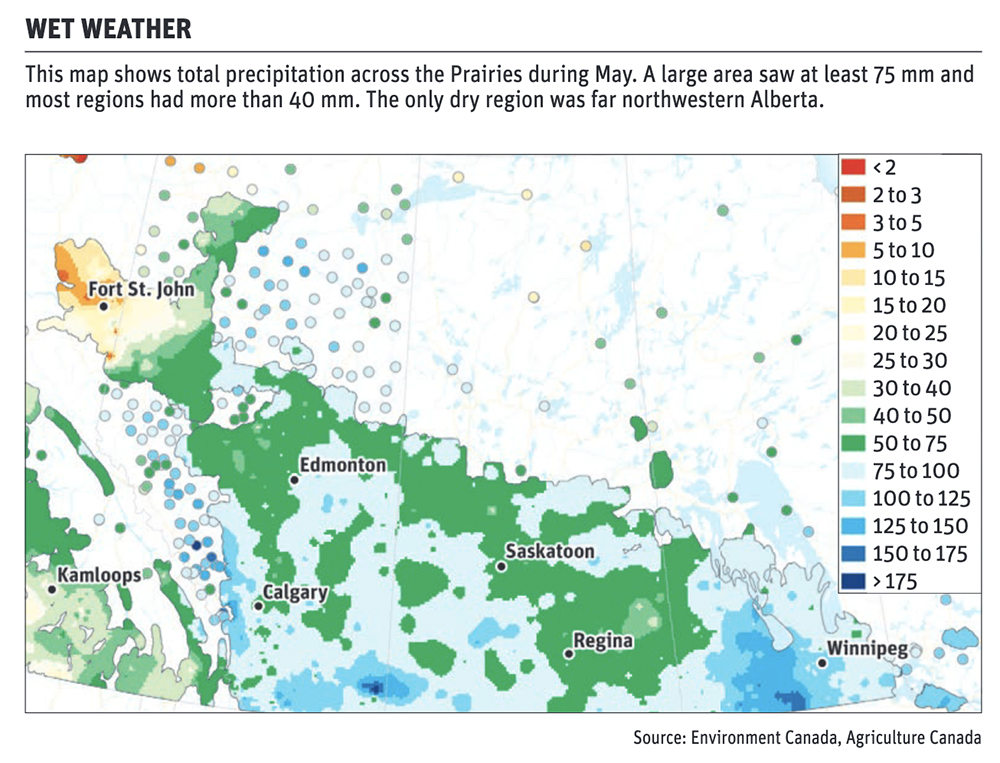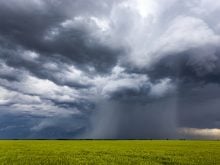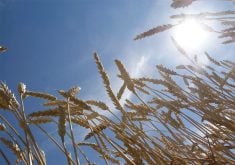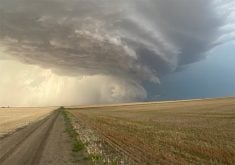We are now almost halfway through 2024 and if May was any indication, we could be in for an interesting summer across the Prairies.
One year ago, July-like temperatures in May lasted through most of the month. This year we had to deal with unsettled weather dominated by upper-level lows. Usually, this type of weather pattern results in well-below-average temperatures, but that was not the case this year.
Whenever we have upper lows, like last month, it usually results in below-average temperatures. This year it was warmer than expected, though there were some below average readings.
Read Also

Canola oil transloading facility opens
DP World just opened its new canola oil transload facility at the Port of Vancouver. It can ship one million tonnes of the commodity per year.
In the west, Alberta saw near to slightly below average temperatures and precipitation.
In Saskatchewan, both Regina and Saskatoon reported mean monthly temperatures that were warmer than Alberta, but overall they were either near or a little below average.
Precipitation totals ranged from 45 to 55 mm, near to slightly above average.
Manitoba was both the warmest and wettest in May. Winnipeg was the warm spot across the Prairies for the month, with a mean monthly temperature of 12 C, about 0.4 C warmer than average.
Winnipeg reported 114 mm and Brandon reported 102 mm, each about double what would normally be expected in May.
Looking back at the long-range forecast for May, none of models did a good job of predicting the weather. If I had to pick a winner, it would be the CFS model, which called for a cool start to the month, northern regions with the best chance of above-average temperatures and western Manitoba and southeastern Saskatchewan with the best chance of above-average precipitation.
Now for the critical summer forecasts and predictions. The Old Farmers Almanac calls for near- to slightly above-average temperatures for all three months, with July the warmest compared to average. Its precipitation forecast calls for a dry summer with below average amounts in all three months.
The Canadian Farmers Almanac, which is much tougher to figure out, appears to call for an up and down June, July and August with periods of below and above average temperatures. Same thing goes for precipitation, as it calls for periods of dry weather along with wet showery/thunderstorm weather.
As for the weather models, NOAA’s extrapolated forecast calls for near-average temperatures across the central and eastern Prairies with above-average temperatures in the west. The precipitation forecast is for near-average amounts in most regions, and western regions with the highest probability of below-average amounts.
The CFS model has cooled down the summer forecast a bit. It predicts slightly above-average temperatures in June, followed by near-average temperatures in July and August.
The precipitation forecast is for above-average amounts over the northern Prairies in June and below-average amounts across the south. July and August are forecasted to see above-average amounts across Saskatchewan and Manitoba with below-average amounts in western Alberta.
The CanSIPS model is still calling for above-average temperature all summer, along with near- to slightly below-average precipitation.
The last weather model is the ECMWF or European model, which forecasts above-average temperatures in June, July and August, along with near- to below-average precipitation, and the western Prairies with the greatest chance of below-average amounts.
For my forecast, I admit there is no strong signal to hook on to, but my gut says to stick with the status quo, which means near- to slightly above-average temperatures and precipitation. But as I always say, if I could predict the weather, I would be rich.
Daniel Bezte is a teacher by profession with a BA in geography, specializing in climatology, from the University of Winnipeg. He operates a computerized weather station near Birds Hill Park, Man. Contact him at dmgbezte@gmail.com.


















